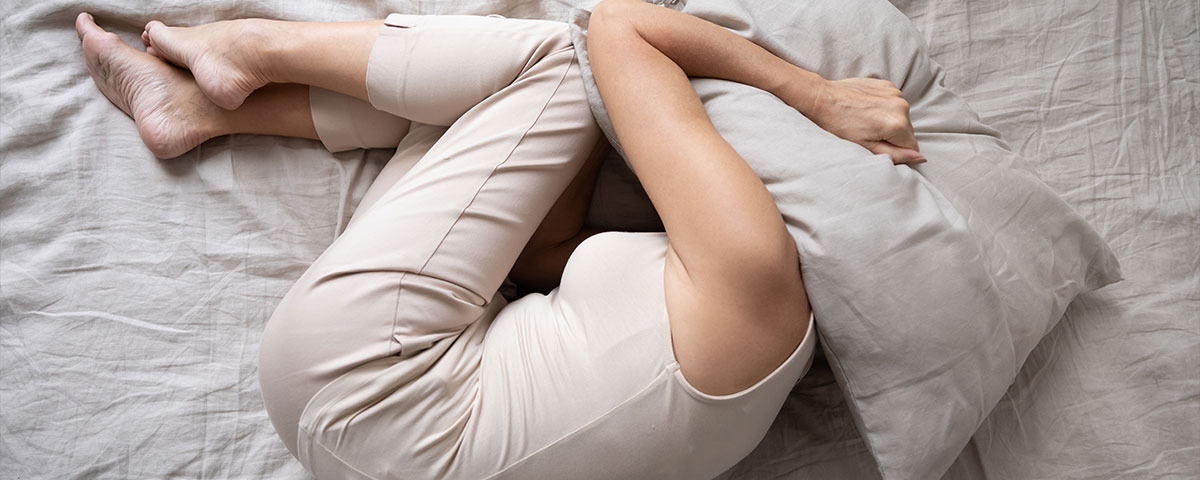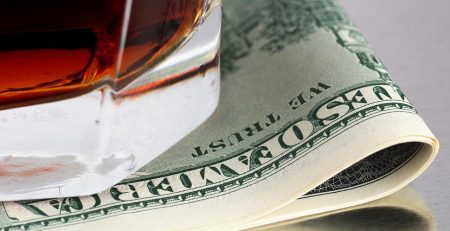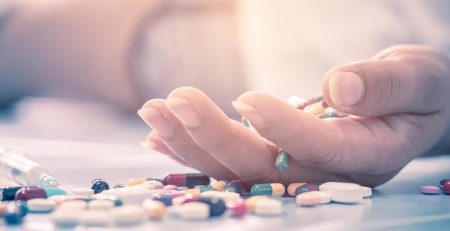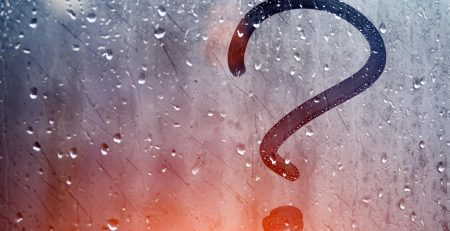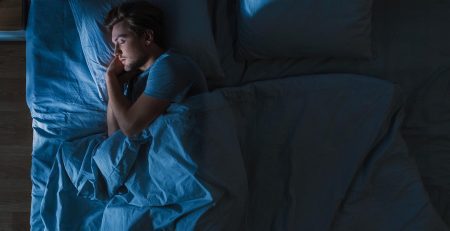Feeling down every once in a while is normal, but feeling sad so often to the point where it affects your life can indicate a more serious problem. Clinical depression is a condition that can be treated with medication, therapy, and positive changes to your lifestyle. But exactly what are the different types of depression, and how do they affect those that suffer from them? Many individuals struggle with depression and can maintain a healthy and happy life with the right kind of care. As a Florida luxury drug and alcohol rehab that offers mental health care, we want to share more information about the different types of depressive disorders and their symptoms.
What Is Depression?
Depression is a common and serious mental disorder that negatively impacts a person’s mood, thoughts, and actions. All the different types of depression can cause symptoms of sadness and a loss of interest in activities that were once enjoyable. While this condition focuses primarily on a person’s mood, it can also lead to serious physical and behavioral problems. Many people who do not receive mental health treatment for illnesses like depression end up turning to self-destructive behaviors like substance abuse or self-harm to cope. Seaside Palm Beach offers depression recovery treatment and other forms of mental health care that can help patients learn how to enjoy life and develop healthy coping skills.
What Are the Different Types of Depression and Symptoms?
Receiving an accurate mental health diagnosis is important. If you suspect that you’re struggling with a formal mental health disorder, the first step is always to talk to your doctor. They may refer you to a mental health specialist that can offer an accurate diagnosis of the type of depression you have. Below are 9 different types of depression disorders and their symptoms.
Major Depressive Disorder
Patients are diagnosed with major depressive disorder when they experience five or more of the symptoms below on most days, for two weeks, or longer:
- Feeling sad or emotionally numb
- Loss of interest in activities you once enjoyed
- Extreme weight loss or weight gain
- Feeling tired or fatigued
- Feeling worthless, empty, or guilty
- Difficulties concentrating or making decisions
- Difficulties sleeping
- Frequently feeling sleepy during the day
- Constantly feeling worried or anxious
- Unexplainable aches or pains
- Memory problems
- Thoughts of suicide, death, or suicidal behavior (self-injury)
If you or someone you know experiences these symptoms, talk to a doctor right away. Otherwise, the escalation of symptoms may occur and result in the sufferer attempting something irreversible in search of relief.
Psychotic Depression
Psychotic depression, or depressive psychosis, refers to phases during major depression in which a person loses touch with reality. Psychosis can include hallucinations and delusions.
The most common symptoms of psychotic depression include:
- Hallucinations (e.g., hearing, seeing, smelling, tasting, feeling things that aren’t there)
- Delusions (holding false, irrational beliefs)
- Profound sadness
- Feelings of worthlessness or guilt
- Changes in appetite and sleep patterns
- Low energy levels
- Difficulty concentrating
- Thoughts of death or suicide
Delusions can also occur during psychosis, which refers to holding onto a belief that’s false and makes no sense. Psychotic depression symptoms can be debilitating and may warrant professional help to prevent any harm from taking place. Antidepressant medicine, antipsychotic medication, and psychotherapy are frequently used in the treatment of psychotic depression. In serious situations, hospitalization can be required.
Persistent Depressive Disorder
Persistent depressive disorder refers to depression that lasts for two years or longer. The term is used to describe dysthymia and chronic major depression.
Some common symptoms of persistent depressive disorder include:
- Extreme sadness
- Feelings of hopelessness or emptiness
- Extreme changes in appetite and weight
- Sleeping too much or too little
- Low self-esteem and sense of self-worth
- Decreased energy or frequently experiencing fatigue
- Difficulties completing tasks at school or work
- Inability to feel joy (anhedonia)
- Withdrawing from loved ones
The severity of symptoms can fluctuate, and some people may have episodes of major depression before or while they have this disorder. This is otherwise known as double depression.
Bipolar Disorder (Manic Depression)
Bipolar disorder, or manic depression, is characterized by periods of mania or hypomania, which is when you feel extremely happy with random periods of depression. Manic depression is an older name for bipolar disorder. A person will be diagnosed with bipolar disorder if they experience an episode of mania that lasts longer than seven days.
Some common signs and symptoms of bipolar disorder include:
- Feelings of sadness or emptiness
- Difficulties concentrating
- Fatigue and decreased energy
- Trouble sleeping
- Decreased activity
- Loss of interest in activities that were once enjoyable
- Suicidal thoughts or behavior
A person who is experiencing a manic phase may show signs like:
- Lack of sleep
- Increased alertness and energy
- Racing thoughts
- Fast speech
- Unrealistic sense of superiority (grandiose thinking)
- Increased confidence and self-esteem
- Risky or self-destructive behavior (like substance abuse or driving under the influence of alcohol)
- Feeling high or euphoric
These manic episodes can cause hallucinations and delusions in severe cases. Hypomania is a less severe form of mania that can include mixed episodes of mania and depression. These symptoms can worsen over time if the individual fails to receive bipolar disorder treatment.
Seasonal Affective Disorder (SAD)
Seasonal affective disorder (SAD) or seasonal depression refers to major depressive disorder with a seasonal pattern. People with this condition may feel depressed during the winter season. Symptoms of SAD may begin in the fall and persist throughout winter. Some of these symptoms include:
- Withdrawing from loved ones
- Sleeping more often
- Weight gain
- Feeling sad, worthless, or hopeless every day
Symptoms of seasonal depression usually last throughout the winter season and improve when spring begins.
Postpartum (Peripartum) Depression
Postpartum depression is also referred to as peripartum depression or perinatal depression. However, postpartum depression refers to a form of major depression that occurs after birth, while perinatal depression can occur during pregnancy. It usually occurs during pregnancy or within four weeks after childbirth. These forms of depression are usually the result of fluctuations in hormonal balance. The lack of sleep and discomfort that many new mothers experience also doesn’t help.
Some common symptoms of perinatal depression include:
- Sadness
- Anger or rage
- Anxiety or worry
- Exhaustion and fatigue
- Extreme worry or anxiousness about the baby’s health
- Difficulties caring for yourself or the baby
- Thoughts of harming yourself or the baby
Premenstrual Dysphoric Disorder (PMDD)
Premenstrual dysphoric disorder (PMDD) is a more severe form of premenstrual syndrome (PMS). PMDD symptoms tend to be more psychological compared to PMS symptoms. For example, while a woman with PMS may feel more emotional during the days leading up to her menstrual cycle, a woman with PMDD may experience a level of depression and sadness that disrupts their daily functions.
Some common symptoms of PMDD include:
- Headaches
- Mood swings
- Irritability
- Fatigue and decreased energy
- Sadness
- Joint and muscle pains
- Cramps, bloating, breast tenderness, and itchiness
- Panic attack or anxiety
- Severe worry
- Difficulties sleeping
- Difficulties focusing
- Food cravings or periods of binge eating
Like perinatal depression, PMDD is also linked to hormonal changes. Its symptoms usually begin after ovulation and subside when the menstrual cycle begins.
Atypical Depression
Atypical depression is a form of depression that temporarily goes away when something positive happens. Despite its name, atypical depression isn’t rare or “atypical.” It’s also not any worse or any less severe than other types of depression disorders. Having atypical depression can be challenging because the individual may not always “seem” depressed to others. This could make it difficult for their loved ones to understand their condition.
Common symptoms of atypical depression include:
- Increased appetite and weight gain
- Disorder eating
- Sleeping more often
- Poor body image
- Low self-esteem
- Insomnia or trouble sleeping
- Heaviness in your arms or legs that lasts an hour or longer
- Unexplainable aches and pains
“Situational” Depression
Situational depression, or adjustment disorder, is a form of depression that results from different events or situations. Some of these situations may include:
- The death of a loved one
- Divorce or child custody battles
- Abusive relationships
- Unemployment
- Legal troubles
- Financial troubles
- Illness or life-threatening condition
While it’s normal to feel sad or anxious during these kinds of situations, situational depression occurs when these feelings affect your day-to-day life more than the event itself.
The symptoms of situational depression can begin within three months of the event and may include:
- Trouble sleeping
- Frequent crying
- Changes in appetite
- Anxiety or constant worry
- Sadness and hopelessness
- Unexplainable body aches and pains
- Difficulties concentrating
- Withdrawing from friends and family
- Decreased performance at work or school
- Decreased energy and frequent fatigue
Living With Depression: It Doesn’t Have to Control You
Although dealing with depression can be extremely difficult, it’s crucial to realize that it doesn’t have to rule your life. The ups and downs of depression can be managed and navigated with the appropriate support, coping mechanisms, and treatment.
Some strategies to take back control of your life so your depression no longer controls you are:
- Seek support: Being able to rely on a solid support system is essential when dealing with depression. Speak with dependable friends, relatives, or support groups who can lend a sympathetic ear and words of encouragement. Never be afraid to get expert assistance from therapists or counselors who focus on mental health. You don’t have to deal with depression alone, and asking for help is a courageous and crucial step toward recovery.
- Practice self-care: Self-care is essential for managing symptoms. Exercise, engaging in hobbies, or spending time in nature are just a few ways to practice self-care for depression. Put an emphasis on things that feed your mind, body, and soul, whether it’s mindfulness training, meditation, or just relaxing in a hot bath. Self-care is not self-indulgent; it is a necessary component of your well-being and can support the replenishment of your mental and emotional reserves.
- Develop coping strategies: Discover and cultivate coping strategies that work for you. This may entail recognizing triggers and developing coping mechanisms, putting stress-reduction tactics into practice, or discovering creative outlets like writing, music, or art. Try out various coping strategies to see which ones work best for you. The ability to maneuver through challenging situations and experience brief periods of calm and resilience can be gained by developing a toolkit of efficient coping techniques.
- Maintain a routine: When dealing with depression, establishing a regular routine can provide you a feeling of structure and stability. Set daily objectives that are doable and divide them into more manageable chores. Even on challenging days, having a schedule can give you a sense of success and purpose. If you run into obstacles or failures along the route, keep in mind to be adaptable and patient with yourself. Your routine shouldn’t be a source of pressure or self-criticism but rather a friendly guide.
If you suspect that you or a loved one has any of the types of depression discussed above, see a doctor. A doctor will refer you to a specialist who can diagnose your condition. Doctors also usually encourage mental health care in the form of therapy. Our luxury rehab offers various forms of mental health treatment in Palm Beach that can help patients cope with the symptoms of mental illnesses like depression.
If you or someone you know is battling a substance use disorder or mental illness, call our high-end rehab now at 561-677-9374 to learn more about our luxury addiction treatment programs and mental health services.
Related Readings:

